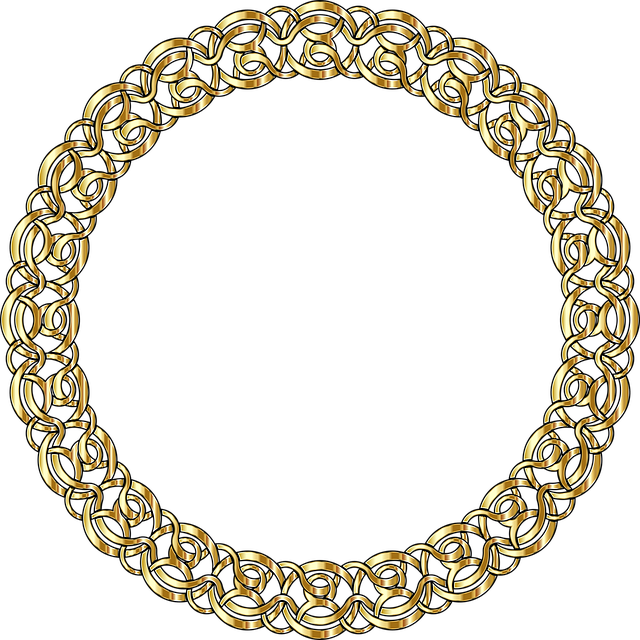401(k) to gold and silver conversion involves a careful process where you must confirm your plan's eligibility for a rollover by reviewing plan documents and consulting with your 401(k) custodian. Check for rules on in-service withdrawals or rollovers, and ascertain that your plan allows investments in precious metals, possibly with the guidance of a financial advisor well-versed in self-directed IRAs. Ensure compliance with IRS regulations throughout to avoid taxable events or penalties. After confirming eligibility, you can choose between a direct or indirect rollover into a self-directed IRA focused on precious metals. Select an IRS-approved custodian with expertise in managing gold and silver investments, and adhere to IRS purity and quality standards for the physical assets. This process maintains the tax-advantaged status of your retirement savings while allowing you to diversify into tangible assets. Remember to consult with a tax professional to navigate the complex rules and ensure proper tax treatment post-rollover.
Exploring the transition of your retirement savings into tangible assets, our article delves into the process of converting a 401(k) to gold and silver. This financial maneuver requires meticulous evaluation of your plan’s rollover policies and understanding the available options for such a transfer. We guide you through each critical step, from verifying eligibility to selecting a reputable precious metals IRA custodian, ensuring compliance with tax regulations and guiding you on the path to diversify your retirement portfolio with precious metals. Understanding the nuances of this investment strategy is key to making an informed decision that aligns with your financial goals.
- Assessing 401(k) Plan Rollover Eligibility
- Understanding Rollover Options to Gold and Silver
- Steps for Executing a 401(k) to Precious Metals Rollover
- Selecting a Trusted Precious Metals IRA Custodian
- Compliance and Tax Considerations for Your Rollover
Assessing 401(k) Plan Rollover Eligibility

When considering the conversion of your 401(k) to physical gold and silver, the first step is to ascertain the eligibility of your plan for a rollover. Not all 401(k) plans accommodate such transfers; therefore, it’s imperative to consult both your plan documents and the custodian of your 401(k) account. These documents will outline the rules regarding in-service withdrawals or rollovers, which are necessary if you’re still employed by the company sponsoring the plan. If your plan permits these transactions, you have the option to either roll over your 401(k) upon leaving your job or execute an in-service withdrawal while still employed. It’s also crucial to verify the types of assets that can be rolled over, as not all plans allow for the transfer of funds into precious metals. This requires careful review of the plan provisions and possibly a discussion with a financial advisor who specializes in self-directed IRAs or similar retirement accounts that permit such investments. Ensuring compatibility with IRS regulations is another critical aspect; the rollover must adhere to these guidelines to avoid taxable events or penalties. Once you’ve confirmed your plan’s rollover options and ensured compliance with both your plan’s rules and the IRS code, you can proceed with the rollover process to convert your retirement savings into a physical gold and silver investment.
Understanding Rollover Options to Gold and Silver

When considering the conversion of a 401(k) into physical gold and silver, understanding the available rollover options is paramount to a seamless transition. Traditional and Roth 401(k) plans often permit rollovers into other retirement accounts or into a self-directed IRA that allows for precious metals investments. To initiate this process, it’s essential to review your plan documents or consult with your plan administrator to confirm that rollovers are an option under your specific 401(k) arrangement. This verification is crucial as not all plans offer this flexibility.
Once confirmed, you have a couple of routes for rolling over your 401(k) funds into a self-directed IRA. The first route is a direct rollover, where funds are transferred directly from the old 401(k) plan to the new IRA by the custodian of the former account. The second option is an indirect or 60-day rollover, where you receive the funds as a distribution and have 60 days to deposit them into the new IRA. For those who wish to invest in gold and silver, it’s important to choose an IRA custodian that specializes in precious metals and complies with IRS regulations. This ensures that the investments made within the IRA adhere to the purity and quality standards required for such assets to be held within a tax-advantaged retirement account.
Steps for Executing a 401(k) to Precious Metals Rollover

To convert your 401(k) into physical gold and silver, a precise series of steps must be followed. Initially, you must confirm the eligibility of your 401(k) plan for rollover transactions. This involves reviewing your plan documents or consulting with your plan administrator to ascertain whether such transfers are permissible under the terms of the plan. If your plan does allow for rollovers, either because you have terminated employment or it specifically provides for in-service withdrawals, you can proceed with the process.
The next step is to establish a self-directed IRA that will hold the precious metals. This requires selecting a custodian experienced in holding alternative assets like gold and silver. The chosen custodian must be approved by the IRS for this purpose and have the necessary infrastructure to securely store the metals. Once the new IRA account is set up, you can direct the funds from your 401(k) to be rolled over into this account. After the rollover is complete, you’ll need to purchase the physical gold and silver. The custodian will facilitate the purchase of IRS-approved precious metals on your behalf, ensuring that the metals are delivered to an IRS-approved depository in your name. Throughout this process, it is crucial to adhere strictly to IRS rules to maintain the tax-advantaged status of your retirement savings. This includes ensuring that the metals comply with purity standards and are stored in a manner consistent with IRA regulations.
Selecting a Trusted Precious Metals IRA Custodian

When contemplating the conversion of your 401(k) to physical gold and silver, one of the critical steps is selecting a trusted precious metals IRA custodian. This entity will be responsible for holding your assets and ensuring they comply with IRS regulations. The custodian must be IRS-approved and specialize in alternative investments like precious metals. Their expertise is paramount as they facilitate the transaction process, from purchase to storage. It’s imperative to conduct thorough due diligence when choosing a custodian; their reputation, customer service, and track record with similar transactions will significantly influence the success of your investment. Additionally, review their fee structures, as these can vary widely and impact your overall returns. A transparent and competitive fee model is preferable, ensuring you retain more of the intrinsic value of the precious metals within your IRA. The custodian’s compliance with IRS rules and their ability to provide secure, segregated storage for your metals are also vital considerations to ensure the integrity and safety of your investment portfolio.
Compliance and Tax Considerations for Your Rollover

When considering the conversion of your 401(k) to physical gold and silver, it is imperative to navigate the compliance and tax considerations that come with a rollover. To ensure a compliant rollover, you must adhere strictly to Internal Revenue Service (IRS) guidelines. The IRS stipulates that funds from a 401(k) can be rolled over into another retirement account without triggering immediate taxes, provided the rollover is directly transferred between the two custodians involved. This direct transfer, also known as a trustee-to-trustee transfer, is the most straightforward method to avoid tax implications and penalties associated with early distribution.
Tax considerations are equally critical in this process. The tax treatment of your rollover will depend on the type of account you are rolling over into—whether it’s a traditional IRA or a self-directed IRA that permits investment in precious metals. For a traditional IRA, the tax implications remain the same as your 401(k), with taxes due upon withdrawal during retirement. However, for a Roth IRA, which may be used after conversion if certain conditions are met, contributions are made with after-tax dollars, and qualified distributions are tax-free. It is advisable to consult with a tax professional to understand the specific tax ramifications for your situation, as there can be complex rules regarding rollovers and tax-deferred growth. Additionally, the precious metals you choose must comply with IRS purity standards in order to maintain the tax-advantaged status of your retirement account. Proper due diligence and professional advice are essential to ensure a successful and compliant rollover into physical gold and silver.
In conclusion, transitioning a traditional 401(k) into physical gold and silver within an IRA framework is a strategic financial move that requires careful planning and adherence to regulatory guidelines. By verifying rollover eligibility with your plan, understanding the options available for gold and silver investments, meticulously following the rollover process, selecting a reputable precious metals IRA custodian, and addressing compliance and tax implications, you can successfully diversify your retirement portfolio with tangible assets. This approach not only provides a hedge against inflation and currency devaluation but also aligns with a long-term wealth preservation strategy. It’s advisable to consult with financial and tax professionals throughout this process to ensure a smooth transition and compliance with IRS regulations.
